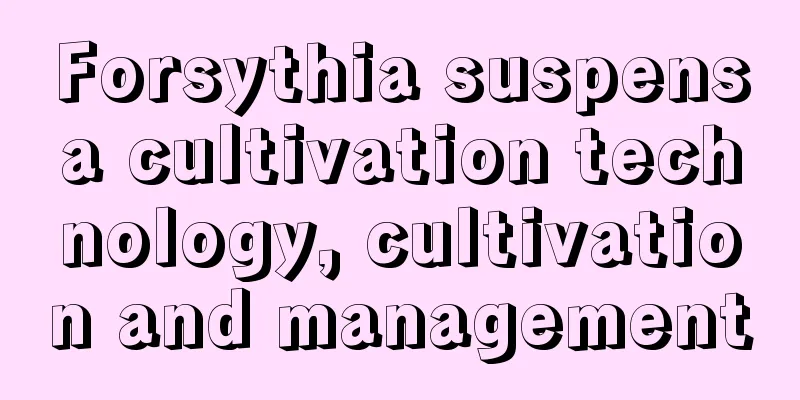How to grow mulberry leaf peony well

Growing conditions of peonyMulberry leaf peony has high requirements for its growing environment, because it is not cold-resistant, shade-tolerant, or drought-tolerant. It needs to maintain a growing environment with sufficient light, warm and humid. It is suitable to choose a slightly acidic soil rich in humus and with good drainage for planting. How to grow mulberry leaf peony1. Soil: Mulberry leaf peony does not have high requirements for soil quality and can adapt to any soil except soil with high salinity and alkali content. 2. Temperature: It likes a warm environment, and the optimum temperature is between 15-25℃, which allows it to grow better. 3. Light: It is best to give it a full-sun lighting environment every day. In winter, it should be exposed to scattered sunlight for about 8 hours. 4. Watering: Except for the winter when the temperature is low and water needs to be controlled, it is best to water once a day in other seasons. In summer, it is best to water once in the morning and evening. Water thoroughly. In the dry season, it is also necessary to spray water appropriately to maintain the air humidity. 5. Fertilization: It needs to be provided with sufficient nutrients. When growing in potted plants, apply enough base fertilizer at the beginning. Use a mixture of fully decomposed animal manure and phosphorus fertilizer as base fertilizer. Thereafter, apply light liquid fertilizer once every month or so. Precautions for the maintenance of mulberry leaf peony1. Pruning We can do pruning and shaping before and after taking the plants out of the house in early spring. Except for leaving 2-3 buds at the base of each branch, all the upper parts should be cut off. Pruning can promote the growth of new branches, which will make the plants grow more vigorously and have a beautiful shape. 2. Pest and disease control Leaf spot disease: Mulberry leaf peony leaf spot disease. The key to the prevention and control of this disease is to do a good job of cold prevention. Take protective measures when strong winds and temperatures drop in autumn. On this basis, timely spraying of 500-800 times diluted mancozeb or 1500 times % ammonium can have a good prevention and control effect. Stem rot: The key to preventing and controlling the mulberry leaf peony stem rot is to prevent the plants from being washed away by heavy rain for a long time, and to apply 200-500 times diluted thiophanate to the stems every 10 days or so before and after the rainy season. Tests have shown that this method has a good control effect. Root-knot nematode disease: Root-knot nematode disease of mulberry leaf peony is difficult to prevent and control. If there are few plants, the soil can be changed. The soil must be exposed to the sun for a long time, and the old soil should not be used again. For more plants, aldicarb granules can also be applied, and about 0.5 grams can be buried in a 5-inch pot. |
<<: Is it easy to grow crape myrtle stumps? How to grow old crape myrtle stumps
>>: Can Milan be hydroponically cultivated?
Recommend
How to revive a dying green radish
1. Root rot If you find that the roots of the pla...
alert! Nine kinds of flowers can easily cause miscarriage in pregnant women!
Oleander: May cause miscarriage Oleander has brig...
When is the best time to sow Paris polyphylla seeds
Sowing time of Paris polyphylla seeds Fritillaria...
How to keep seeds of Solanum nigrum and how to collect seeds
How to keep seeds of Solanum nigrum Solanum nigru...
Can white orchids be placed in the bedroom?
1. Can it be placed in the bedroom? If your famil...
Saxifraga cultivation methods and techniques
Saxifrage , also known as stone lotus leaf, is a ...
How to grow Monstera
1. Watering If you want to grow Monstera well, th...
What is the probability of the lucky tree blooming?
1. What is the probability of the lucky tree bloo...
Ice grass planting method and season
Ice grass , also known as ice plant and ice-leaf ...
The characteristics of oriental flower arrangement
The first characteristic of oriental flower arran...
How to grow lettuce
1. Prepare the soil Prepare a piece of open space...
Top 10 famous brands of compound fertilizers in China (which brand of compound fertilizers has good quality)
What brand of compound fertilizer is good in Chin...
How to propagate Syngonium
1. Division propagation Syngonium has a strong gr...
The correct way to apply fresh aloe vera on your face, the role of aloe vera gel
1. Correct method When applying fresh aloe vera o...
Cultivation methods and precautions of Cineraria
1. Breeding methods 1. Soil It is afraid of dryne...









